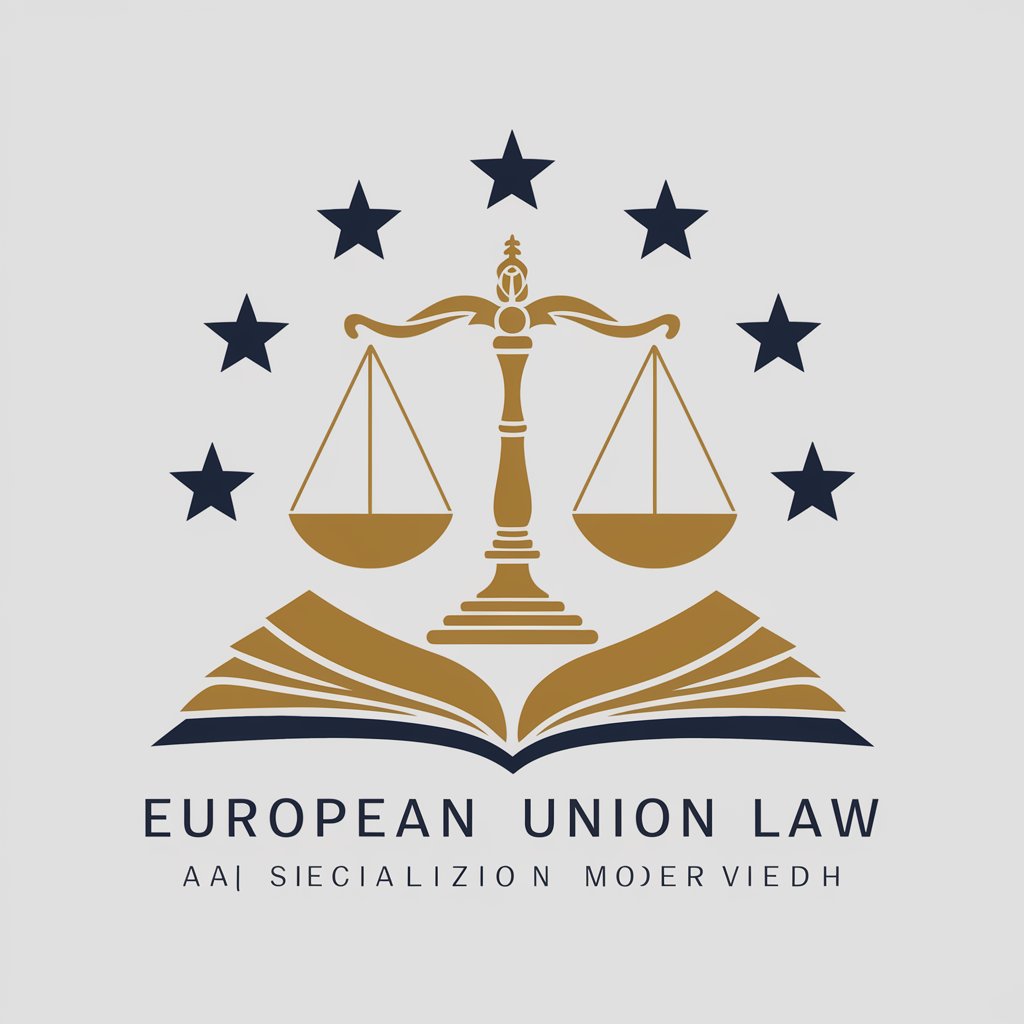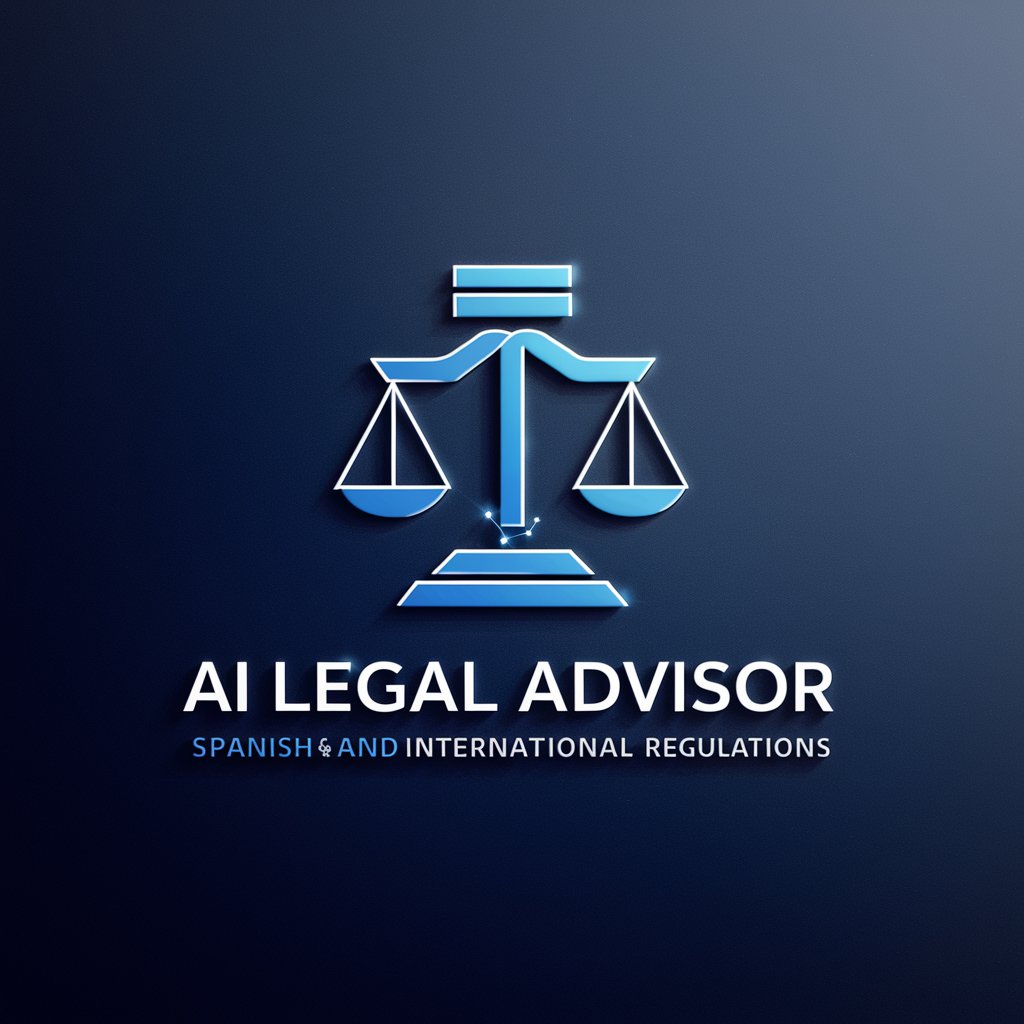eu law - EU Legal Expertise

Welcome! Let's explore EU law together.
Navigating EU Law with AI Precision
Explain the principles of free movement of goods within the EU as per Articles 34-36 TFEU.
How does the Services Directive 2006/123/EC impact cross-border service provision?
What are the rights of third-country nationals under EU law?
Discuss the implications of the Schengen Agreement on the freedom of movement for EU citizens.
Get Embed Code
Introduction to EU Law
EU Law, the body of laws, regulations, directives, and decisions that govern the collective member states of the European Union (EU), is designed to ensure the free movement of people, goods, services, and capital within the internal market; enhance social and economic cohesion; and promote human rights. A quintessential example of EU law in action is the Schengen Agreement, which abolished many of the EU's internal borders, enabling passport-free movement across most of the bloc. Another illustrative case is the General Data Protection Regulation (GDPR), which harmonizes data privacy laws across Europe, protecting EU citizens' data privacy and reshaping the way organizations across the region approach data privacy. Powered by ChatGPT-4o。

Main Functions of EU Law
Harmonization of laws
Example
Consumer protection laws
Scenario
EU law mandates common standards for consumer rights across member states, ensuring that all EU consumers enjoy a high level of protection. For instance, the Consumer Rights Directive provides consumers with rights to transparent information and a 14-day EU-wide right to withdraw from distance contracts.
Regulation of competition
Example
Antitrust policies
Scenario
EU law aims to prevent anti-competitive practices and ensure fair competition within the internal market. A notable case is the European Commission's antitrust action against Google, fining the company for abusing its dominance in the Android mobile operating system to strengthen the dominance of its search engine.
Environmental protection
Example
Emissions trading system
Scenario
The EU's Emissions Trading System (ETS) is a cornerstone of the EU's policy to combat climate change and its key tool for reducing greenhouse gas emissions cost-effectively. It limits emissions from more than 11,000 heavy energy-using installations and airlines operating between these countries.
Ensuring freedom of movement
Example
Schengen Area
Scenario
The Schengen Agreement allows for the abolition of internal borders, enabling passport-free movement across many EU countries. This facilitates not only the freedom of movement for citizens but also simplifies the transport and logistics for businesses within the Schengen Area.
Ideal Users of EU Law Services
Businesses operating in the EU
Companies that conduct trade or provide services across EU member states benefit from the harmonized regulations and single market principles, enabling easier cross-border operations and access to a wide consumer base.
EU citizens
Individuals living, working, or studying in the EU benefit from EU law through the protection of their rights, freedom of movement, and access to health and educational services across member states.
Policy makers and regulators
EU and national policy makers utilize EU law to draft and implement policies that align with EU directives and regulations, ensuring consistency and cooperation across member states in addressing common challenges.
Consumer rights organizations
These organizations rely on EU law to advocate for consumer rights and protections, leveraging EU-wide regulations to ensure consumers are treated fairly and uniformly across the internal market.

Guidelines for Using EU Law Tool
Initial Access
Visit yeschat.ai to access a free trial of the EU law tool without needing to log in or subscribe to ChatGPT Plus.
Understanding EU Law
Familiarize yourself with basic concepts of European Union law, including treaties, directives, and case law, to effectively use the tool.
Identify Specific Needs
Clearly define your legal query or the specific aspect of EU law you need assistance with, such as trade, immigration, or human rights.
Input and Interaction
Input your query into the tool, providing specific details or context. Engage interactively for clarifications or follow-up questions.
Apply Insights
Utilize the information and insights provided by the tool to inform your legal decisions, academic research, or policy analysis.
Try other advanced and practical GPTs
Tablets
Empowering Creativity with AI

会議のアジェンダ作成ツール
AI-powered Meeting Efficiency

Garden Crops
Empowering your garden with AI

ICON MAKER
Crafting Intuitive Icons with AI

Experto Legal en Normativas
AI-powered legal expertise at your fingertips

Run Coach Pro
AI-Powered Personal Running Coach

Mentor de Contabilidad de Costos Ejecutivo
Simplifying cost accounting with AI

소원을 이상하게 들어주는 원숭이 손
Twisting Wishes with AI Creativity

Visual Storyteller
Transform words into visual stories

TechDraw AI by TTK
Simplifying technical drawings with AI

Pix'toon art
Bringing stories to life with AI-powered cartoons.

NestJS Guru
Empowering NestJS Development with AI

Frequently Asked Questions About EU Law Tool
Can EU law assist with interpreting new EU regulations?
Yes, the tool can provide insights and interpretations of new EU regulations, helping users understand their implications and applications.
Is this tool suitable for academic research in EU law?
Absolutely. It offers detailed information and analysis, making it an invaluable resource for students and researchers in European Union law.
How can businesses use the EU law tool?
Businesses can use it to understand compliance requirements, assess the impact of EU legislation on their operations, and make informed decisions.
Can this tool help with understanding EU case law?
Yes, it provides summaries and explanations of key cases in EU law, aiding in the comprehension of legal precedents and judgments.
Is the EU law tool useful for understanding the impact of Brexit?
Definitely. It can offer insights into the legal changes and implications of Brexit for both the UK and EU member states.
